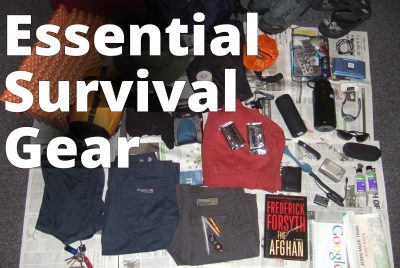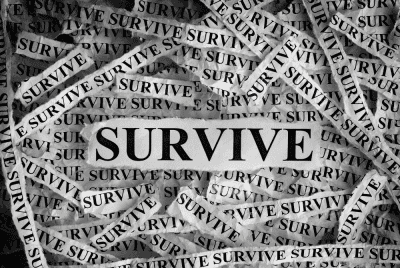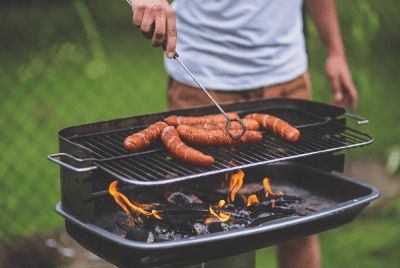Emergency Survival Food: Nutrition and Shelf Life
Building Your Emergency Survival Food Supply: Planning and Preparation Strategies
Ever wondered what sets emergency survival food apart from your everyday grub? It’s more than just a can of beans or a pack of noodles! This type of sustenance is designed with the sole purpose of keeping you alive and kicking when disaster strikes.
Understanding Emergency Survival Food
Nutrition plays a key role here, as these foods are packed with essential nutrients to fuel your body in crisis situations. But don’t mistake it for your regular pantry stockpile! Emergency food is all about long shelf life, easy preparation, and most importantly, providing energy when you’re up against the odds. So next time you plan for an adventure or prep for potential emergencies, remember – not all food is created equal!
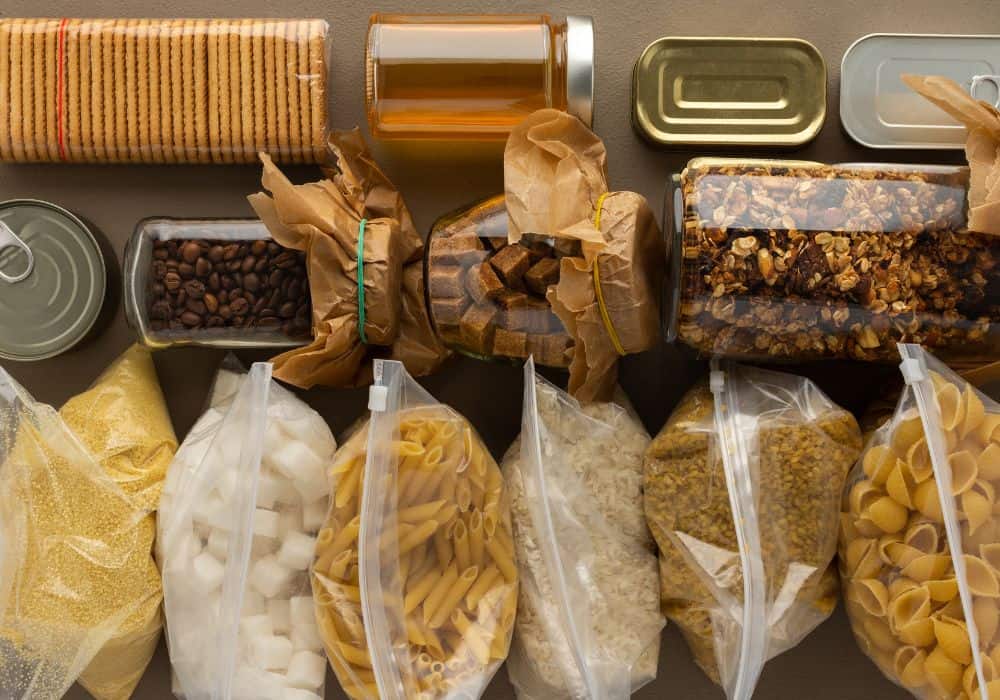
Importance of Survival Food in Emergencies
Ensuring Sustenance During Crises
Imagine you’re stuck in a situation where regular food supplies are cut off. Maybe it’s a natural disaster, or perhaps an extended power outage. In these situations, having emergency survival food on hand is like having a lifeboat on a sinking ship.
-
Emergency survival foods are specially designed to be non-perishable and easy to prepare.
-
They come in various forms such as freeze-dried meals, canned goods, and energy bars.
-
These foods provide necessary calories and nutrients to keep you going when normal meals aren’t available.
Think about it – without food, our bodies can’t function properly. We need energy to think clearly and make crucial decisions during emergencies. That’s why it’s so important to have survival food ready at all times.
Role in Maintaining Health and Energy Levels
But survival food isn’t just about filling your stomach. It plays a vital role in maintaining your health and energy levels too.
-
Foods rich in protein help repair body tissues and support immune function.
-
Carbohydrates provide quick energy that keeps you alert and active.
-
Vitamins and minerals found in fruits, vegetables or multivitamin tablets ensure overall wellness.
Remember the saying “You are what you eat”? Well,This couldn’t be more accurate!
Importance for Long-Term Survival Scenarios
Now let’s talk about long-term survival scenarios. Imagine being stranded somewhere for weeks or even months – sounds scary right? But with the right emergency survival food supply, this becomes less daunting.
-
Long-lasting: Most survival foods have a shelf-life of several years making them ideal for long-term storage.
-
Compact & Lightweight: Many options like dehydrated foods or meal replacement bars are easy to store and carry around.
-
Nutrient-Dense: They pack maximum nutrients into minimum volume ensuring your body gets what it needs even if you consume less quantity.
To put it simply – emergency survival food is not just ‘nice-to-have’, but ‘must-have’ during crises. It ensures sustenance, maintains health & energy levels, and is indispensable for long-term survival scenarios. So next time you’re preparing for potential emergencies – don’t forget the grub!
Diverse Types of Emergency Survival Kits
Basic, Deluxe, and Comprehensive Kits
Emergency survival kits range from basic to comprehensive. The contents vary depending on the level of preparedness one desires.
-
Basic kits usually contain essentials such as water purification tablets, emergency food rations, a first aid kit, and a flashlight. These are compact enough to fit in a backpack or glove compartment.
-
Deluxe kits step up the game with additional items like sleeping bags, thermal blankets, multi-tools, and more extensive first aid supplies. They’re designed for longer-term emergencies or when comfort matters.
-
Comprehensive kits, the MacGyver of survival kits, include everything in the deluxe version plus extras like portable stoves, tents, fishing gear — even books on survival techniques! These are ideal for extreme situations where you might be stranded indefinitely.
Specialized Kits for Different Emergencies
The type of emergency at hand influences the composition of your survival kit. For instance:
-
Natural disaster kits often include tools for digging out of rubble (for earthquakes) or staying dry (for floods).
-
Pandemic kits focus more on personal protection equipment like masks and gloves as well as sanitation supplies.
Each situation has unique needs that require specific resources.
Factors Influencing Composition Of Survival Kits
Many factors influence what goes into an emergency survival food kit:
-
Duration: Are you preparing for 72 hours or two weeks?
-
Climate: If it’s cold weather conditions you’ll need warmth-generating items.
-
Dietary restrictions: Got allergies? Diabetes? You’ll want to pack suitable foods.
-
Number of people: More people mean more resources required.
It’s crucial to consider these aspects while assembling your kit so you’re not caught off guard during an actual emergency.
Remember folks – it’s better to have it and not need it than need it and not have it! So take some time today to evaluate your situation and put together an emergency survival food kit that suits your needs. And remember… stay safe out there!
Guide to Selecting the Right Survival Meals
Shelf Life, Nutritional Value and Preparation Ease
The first thing you’d want to consider when selecting survival meals is their shelf life. You don’t want your food going bad when you need it the most, right? Look for items that can last for years without refrigeration. Canned goods and freeze-dried meals are great options here.
Next up is nutritional value. A bag of chips might taste good, but it’s not going to keep you alive in a pinch. Your body needs a mix of proteins, carbohydrates, and fats to function properly. So choose foods that offer a balanced diet.
Lastly, think about how easy the food is to prepare. In an emergency situation, you may not have access to a full kitchen or even basic cooking tools. So opt for meals that require minimal preparation—think instant noodles or ready-to-eat canned goods.
Dietary Restrictions and Allergies
If you have dietary restrictions or allergies, these must be taken into account too:
-
Gluten-free
-
Dairy-free
-
Nut-free
-
Vegetarian/Vegan
There are plenty of survival food options available for all kinds of diets. Just be sure to read labels carefully!
Balancing Variety with Practicality
While having variety in your survival food stash can make meal times more enjoyable (nobody wants to eat beans every day!), practicality should also play a big part in your selection process.
Consider this:
-
How much space do you have for storage?
-
What’s your budget?
-
How many people are you planning for?
Remember: It’s all about finding the right balance between what you like and what will keep you alive.
Personal Preference Matters Too!
Don’t forget about personal preference! If there’s something you absolutely hate eating (even if it ticks all other boxes), don’t include it in your emergency stash. After all, morale can play a big role in survival situations—you’ll want food that not only nourishes your body but also lifts your spirits.
So there we go—a crash course on choosing the right survival meals! Remember: shelf life, nutritional value, ease of preparation, dietary restrictions/allergies and personal preference should all factor into your decision-making process.
Exploring the Advantages of Heavens Harvest Survival Food
Unique Features: Non-GMO, Long Shelf Life, Easy Preparation
If you’re a survival enthusiast or just someone who likes to be prepared, you’ll appreciate the unique features of Heavens Harvest survival food. It’s non-GMO, which means it doesn’t contain any genetically modified organisms. This is good news for those who are health-conscious and prefer natural foods that have not been modified.
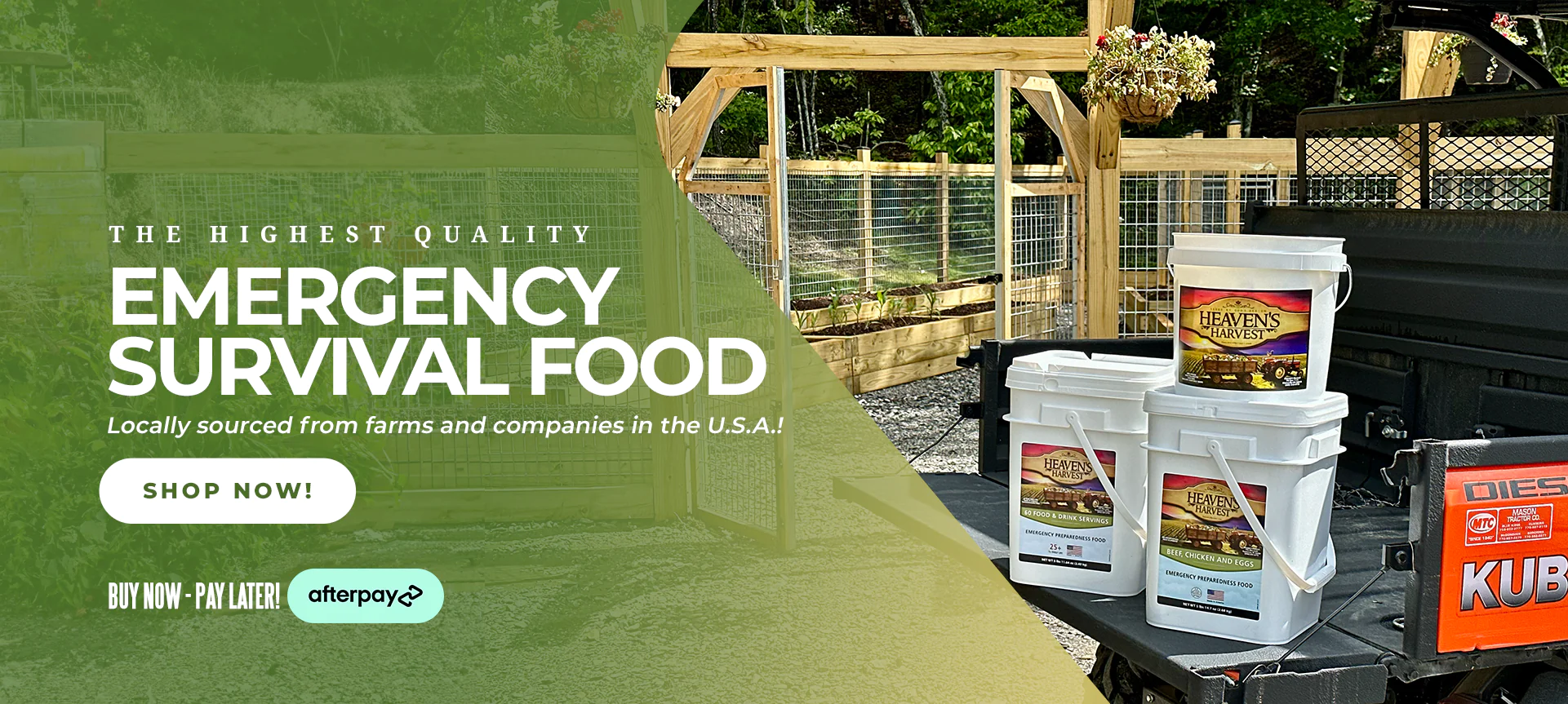
Heavens Harvest survival food also boasts a long shelf life. You can store it in your pantry or survival kit for years without worrying about spoilage. This is crucial in emergency situations where fresh food might not be readily available.
And let’s not forget about easy preparation! No need to be an expert cook to whip up these meals. Just add water, heat if necessary, and voila – you have a nutritious meal ready to eat!
Get 15% off any order, at the checkout use the code – SAVE15HH at https://heavensharvest.com/
Range and Diversity of Meal Options
Now that we’ve covered the basics let’s dive into the variety offered by Heavens Harvest:
-
Breakfast options like oatmeal and granola
-
Lunch and dinner choices ranging from soups to pasta dishes
-
Desserts including brownies and pudding
-
Gluten-free options for those with dietary restrictions
This diversity ensures that even in dire circumstances, you won’t get bored with your meals.
Quality Assurance Practices
Heavens Harvest isn’t just about convenience; they also prioritize quality. They employ rigorous quality assurance practices to make sure every product meets their high standards:
-
Ingredient sourcing: They only use top-quality ingredients.
-
Production process: Each step in their production process is monitored closely.
-
Packaging: Their packaging is designed to keep products fresh and safe.
-
Testing: Every batch goes through rigorous testing before it hits the market.
In short, when you choose Heavens Harvest survival food, you’re choosing quality, reliability, and peace of mind.
Ordering and Storing Emergency Food Supplies
Bulk vs Staggered Buying
Ordering emergency survival food is a crucial task that requires strategic planning. Think about whether to make bulk purchases or opt for staggered buying.
-
Bulk Purchases: You can save money and time by buying large quantities at once. It’s like hitting two birds with one stone, right? But remember, it’s not just about filling up your pantry; you need to consider the storage space and shelf life of the items.
-
Staggered Buying: This approach allows you to spread out your purchases over time, reducing the initial financial impact. Plus, it provides an opportunity to diversify your supplies gradually.
Storage Conditions
Once you’ve got your supplies, storing them correctly is key to maximizing their shelf life.
-
Temperature: Store food in a cool and dry place. Remember Goldilocks? Not too hot, not too cold – just right!
-
Packaging: Use airtight containers or Mylar bags to protect food from moisture and pests.
-
Organization: Keep things tidy! Label each item with its purchase date and expiry date for easy tracking.
Rotation Strategies
Ever heard of the saying “first in, first out”? This strategy ensures freshness and prevents waste.
-
Use older stocks first before opening new ones.
-
Regularly check expiry dates and consume items nearing their end of life.
Here’s a quick tip: arrange items so that those with earlier expiration dates are at the front of your storage area – kind of like how supermarkets do it!
So there you have it – best practices for ordering emergency survival food, ideal storage conditions, and rotation strategies. Now go forth and conquer your emergency food supply mission! Just remember: planning is key!
Strategies for Self-Sufficiency during Crises
Home Gardening: A Lifesaver
Ever thought about the power of a tiny seed? Plant it, nurture it, and voila! You’ve got food on your plate. That’s the beauty of home gardening. It’s not just about pretty flowers and green lawns; it’s a real-deal survival strategy.
-
Fresh produce at your fingertips: Imagine having a supply of fresh fruits, vegetables, and herbs right in your backyard. No more panic buying or rationing canned goods when emergencies hit.
-
Health benefits: Homegrown produce is not only fresher but also healthier as they are free from harmful pesticides and GMOs.
-
Therapeutic effects: Gardening can be a stress buster. In times of crisis, this could be an effective way to keep anxiety at bay.
Next time you’re sipping coffee in your garden, think about turning that space into an emergency survival food source!
Basic Cooking Skills: Less is More
Who said you need a pantry full of ingredients to whip up delicious meals? With basic cooking skills and minimal resources, you can turn simple ingredients into hearty meals.
-
Learn how to cook rice without a cooker.
-
Master the art of baking bread.
-
Understand how to use spices effectively.
-
Get creative with canned goods.
Remember, folks! The best dishes are often the simplest ones.
Water Purification Methods: Hydrate Safely
Water is life – we all know that! But do we know how to make water safe for drinking during emergencies?
Here are some methods:
-
Boiling – Simplest method but requires fuel.
-
Chlorination – Effective but alters taste slightly.
-
Distillation – Best method but needs special equipment.
-
Filtration – Portable filters are available but may not remove all contaminants.
Knowledge about these methods can be crucial in ensuring access to clean drinking water during crises.
Future Trends in Emergency Food Supplies
Advancements on the Horizon
Imagine chowing down on emergency survival food that doesn’t just last for years, but decades. Sounds like something straight out of a sci-fi movie, huh? Well, it’s not as far-fetched as you might think. The future of emergency food supplies is all about extending shelf life and enhancing taste profiles.
Industry bigwigs are pouring resources into research and development to make this a reality. Picture this: vacuum-sealed pouches packed with meals that retain their flavors and nutritional value for 30 years or more! We’re talking about gourmet dishes like beef stew, lasagna with meat sauce, or chicken teriyaki that’ll have your taste buds doing a happy dance even in the direst situations.
Going Green All the Way
But it’s not just about making these foods last longer and taste better. There’s an increasing focus on sustainable sourcing and packaging too. Think biodegradable wrappers and containers made from recycled materials. It’s all about leaving minimal carbon footprints while ensuring you get the nutrition you need during emergencies.
Companies are also looking at how they source their ingredients:
-
Fairtrade practices
-
Organic farming
-
Local sourcing
These aren’t just buzzwords anymore; they’re becoming industry standards.
Plant-based & Lab-grown Options
And let’s not forget the rise of plant-based diets and lab-grown meats! These could soon find their way into emergency food supplies too:
-
Plant-based options: From lentil soups to veggie pasta, expect more vegetarian-friendly choices.
-
Lab-grown meats: This might sound like something out of “The Jetsons,” but lab-grown meat is already here – it’s only a matter of time before we see it in our survival kits!
So there you have it – the future trends in emergency food supplies look promising indeed! Longer shelf lives, improved tastes, sustainable practices, plus an array of plant-based and lab-grown options… It seems surviving an apocalypse won’t be so bad after all!
Concluding Thoughts on Survival Food Importance
Emergency survival food is a game changer. It’s more than just chow—it’s your lifeline when disaster strikes, and the clock starts ticking. You’ve seen how critical it is to have a stash of these meals handy in emergencies. They’re not just any meal; they’re specially designed to meet your nutritional needs during crises.
From exploring diverse types of emergency survival kits to selecting the right survival meals, you’ve got the whole nine yards covered. Heavens Harvest Survival Food stands out for its advantages—long shelf life, variety, easy preparation—you name it! Ordering and storing these supplies isn’t rocket science either.
The goal? Self-sufficiency during crises. And with future trends pointing towards more efficient and innovative emergency food supplies, you’re all set for whatever comes your way.
So don’t sit on the fence—get yourself an emergency survival food kit today. Your future self will thank you!
FAQs
1. What makes Heavens Harvest Survival Food stand out?
Heavens Harvest offers a wide range of meals that are easy to prepare, non GMO and have a long shelf life, making them ideal for emergencies.
2. How do I store my emergency food supplies?
Store them in a cool, dry place away from sunlight. The packaging is usually designed for easy stacking and storage.
3. Are there vegetarian options available in these kits?
Yes! Many companies offer vegetarian and even gluten-free options in their survival food kits.
4. Can I customize my own emergency survival kit?
Some companies offer customizable kits where you can choose what goes into your kit based on personal preference or dietary needs.
5. How often should I replace my stored emergency foods?
Most of these foods have a shelf life of several years but check the expiry dates regularly to ensure freshness.
6.What are some future trends in emergency food supplies?
Future trends point towards more compact packaging, increased variety in meals, better taste and texture, and even sustainable sourcing methods.


